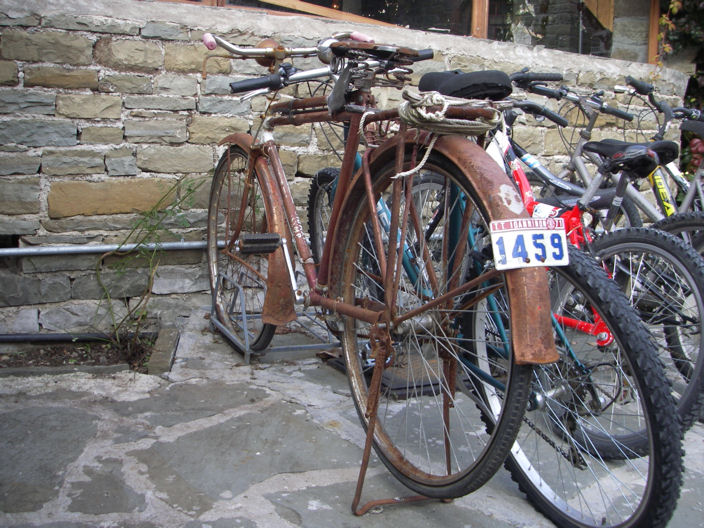I’m supposed to be working on a new photo shoot for the Houghton Street Foundry, but I couldn’t resist sharing up this pearl of rum history.
A note from my archives which I had shared up the other day had a wonderful quote by Scotsman in Jamaica, Patrick Neilson. It was hinted that he wrote a great paper on rum in one of the very first editions of The Sugar Cane.
https://archive.org/stream/ldpd_10924122_003?ui=embed#page/204/mode/2up
I will easily say that it is one of the most significant papers on the topic of early Jamaica rum. It is a ten page origin story that draws from his European experience, the opinions of the German buyers, anecdotes galore, and it just plain fills in a lot of gaps. Neilson’s pursuits are also aroma-centric and I think he is setting a precedent in the literature (1871).
Neilson tells of the mythic rum canes (which so far exist in reference nowhere else but this blog), early ripening canes having more aroma, and Bourbon cane producing his favorite rum. The German buyers paid the most for the first five batches of the season and we find out why. There are admissions of “lucious fruits”, the likely arrival at a pombe fermentation, small estates doing it better. Read it for yourself.
Neilson supports a big point that this blog has been driving for years, which is that distillation itself is no big deal and he glosses over it. Fermentation and the raw materials are everything. My Distiller’s Workbook has always aimed at giving a thorough understanding of still operation so that involvement can be deepened in the other stages. The still operator can be an intern while the fermentation chemist is everything.
Its 1871 and Patrick Neilson is expounding the virtues of slow fermentations and cool temperatures.
[…] quite the opposite to the system usually carried on, namely, the hurrying in of all material, keeping the vats boiling like a pot, fermentation over in three days, closed doors and a heated apartment, consigning all the refuse and bottoms to a dirty cistern, where all, or at least a considerable portion is in a manner lost.”
I would have thought by all I’ve read that the legendary long fermentations started much later but this is 1871.
In order to show the great difference that exists between quick and slow fermentation we have only to look at the method pursued in some parts of Germany for the production of what is known as Bavarian beer, which is the product of a very slow and protracted fermentation, combined with a low temperature, for a full description thereof I would refer to Liebig’s works—a few extracts here however will serve my purpose so far,
This is exciting to me because I want to know where the ideas came from. Now Neilson quotes Liebig:
“the wort after having been treated with hops in the usual manner is thrown into wide flat vessels, in which a large surface of the liquid is exposed to the air, the fermentation is allowed to proceed while the temperature of the chamber in which the vessels are placed is never allowed to rise above 60°. The fermentation lasts from three to six weeks, and the carbonic acid evolved during its continuance is not in large bubbles which burst upon the surface of the liquid but in small bubbles like those which escape from an acidulous mineral water, a great deal of yeast is deposited on the bottom of the vessel in the form of a viscous sediment; this precipitated yeast does not excite ordinary fermentation again, and when the yeast is used again several times in succession the temperature may be increased much higher.”
I highlight the whole quote because Patrick single it out (by now he is Patrick to me). This check list is on his mind and you see such differentiation of fermentation phenomena on the minds of other Jamaican rum chroniclers that came much later. Vat size and shape would become important and would be a factor others were in tune to as they pursued fermentation with symbiotic cultures.
The beer so obtained is entirely different and far superior to many other sorts; and if this superiority is got simply from a slower fermentation then I hold that like results may be obtained in rum making.
Jamaican rum styles were not evolving out of the success of neglect or anything like that, they were being directly inspired by beer!
What in fact first drew my attention to seeking out a flavour in rum was the running I first got from what is known here as the dirty cistern, a receptacle for all the refuse, bottoms, &c. of the other vats; I was astonished to find at the can pit mouth, as the run came over, an exquisite flavour. I considered and said, why not make all the other vats, dirty cisterns, or at least to come extent, and I proceeded accordingly, with very happy results.
This is the very first experiment with cane trash and it has a time stamp and a first name. After this the ferments get a little more complex and feature more cane byproducts and ratios of cane byproducts as seen in the Experiment Station works.
I may state that the said dirty cistern besides being a receptacle for all refuse, is allowed to go on fermenting away, sometimes dead, sometimes alive, for three or four weeks; in fact, a sort of putrefaction goes on, and an acidity is produced which frees the aroma, hence a fine flavour when full.
This is some fine organoleptic investigation. What I think he is noticing is that fermentations are going on that produce all manner of fatty acids. Alkaline lime marl is also being added, but not intentionally as will come later in history. At this point its just excess from cane boiling. The lime alters pH, restarting fermentation when it runs away and becomes too acidic. The lime also has an affinity for shorter chain less noble fatty acids and it frees longer chain acids that were previously bound as salts. This is more pronounced as the cistern gets full of liquid and that is what Patrick is noticing. In the not too distant future they will know all the specifics.
Following up my ideas, I then proceeded to turn half of the vats, gradually increasing up to two-thirds, into slow fermentation, and commenced by adding material in small quantities to each vat. The vats were about six feet deep, holding about 2000 gallons. I only put in liquor to cover about two feet at the commencement and added from day to day as I saw them dying off, keeping them always gently excited till they were filled up. I kept them moving this way for two weeks, sometimes less, sometimes even more.
I see this as wildly important and I’ve been collecting these anecdotes about the very beginnings of the seasons where practices may differ from later on. Every detail influences the microbial community. Patrick may have been starting a fission yeast Pombe ferment as opposed to a conventional budding yeast ferment. Whatever trash he started with may have dropped the pH low even that an alt yeast took hold.
As these vats began to work I soon found a rich fruity odour pervading the house, and I then knew I had the right thing, which was confirmed at the can pit mouth.
On resetting up these vats I did not as customary, pitch the bottoms into the dirty cistern, but set up again on them, continuing to so for three or four successive occasions when the liquor began to get muddy and I had to throw them out.
What Patrick is describing here is a back slopping technique often used in Cachaca ferments. A microbial community will soon evolve to an equilibrium. The yeast though can get tired and they may require conditions better suited for reproduction.
I found at about the third setting up, a round from which I obtained the finest flavour, after that the vat began to get too heavy and sluggish besides acid. I then threw the whole away, dunder included, and drew from the other third, that is, I kept one-third of the vats working on the old system, for the sole purpose of obtaining a fresh and sweet dunder.
Without chemical control, they have yet to be working on continuous system and instead are on everything third batch you start again.
By setting up on these bottoms I extracted all their virtues, not so by a dirty cistern, it is far too clogged up, and there is not half enough liquor in it for the solubility of the precipitations, there is a loss there also, as the dunder has to be thrown away at every running of a dirty cistern.
This shows the more primitive system Patrick was getting away from. They knew there was alcohol in the byproduct and they periodically ran it through the still.
By thus working I changed the character of the fermentation very soon, only small bubbles working on the surface quite gently, something like an acidulous mineral spring.
Noticing something different, he may have found our hero Pombe.
When I wrote my first paper on the subject it gave rise to some comment—why could I only make two-thirds of my rum crop good and not the whole?
I highlight this because we may find that article.
Besides that, I then quietly withdrew all my low wine stills. I was the first to do this, but it has now become a common practice on many estates. I would however suggest that these low wine stills be redistilled—it would take away the low winey flavour.
This is a little hard to interpret and I think it means that they started to find, now that they were producing more aroma, more virtue in fractions further along the run.
In addition to what has been said, there are many minor details requisite for procuring flavour, none more so than getting plenty of Rum Cane liquor, that is the half rotten or rat eaten cane, unsuitable for sugar and generally sent to the still house, not at all for flavour, but from economical motives, however the bookkeeper often gets flavour thereby quite unwittingly. The rum canes have gone through a process themselves of a slow fermentation, lying in the field and yard, hence their efficacy.
This to me is among the most exciting parts of the paper because it discusses a tradition that may have been completely erased. If a microbial community needs to be created from scratch, this may be the place to look. It would likely be the subject of an awesome PhD paper. This also parallels whole cluster fermentation in wine grapes and is known to produce a distinct character with specific chemical markers.
I have known some estates making rum one year worth £25 in England, and the next only getting £17. I could trace it to the want of rum cane; when rum cane is not to be had, sweet cane liquor is as good only subjected to proper treatment.
Cane liquor likely being fresh sugar cane juice which brings its microbial community because it was not sterilized in the boilers like molasses. The experiment station documents decades later make use of lots of fresh sugar cane juice and if I remember correctly fail to acknowledge the rum cane. I suspect hat as more trained scientists entered the fray they absolutely could not rap their heads around rat eaten cane.
Another indispensable article is skimmings; a distiller cannot get too much of these. I have seen some estates giving away the half of them to the working mules, they were very probably throwing away £5 per puncheon; very few mules now enjoy that beverage, the value being better understood.
We all know of skimmings but we have not seen such an endorsement nor such an anecdote!
The skimmings are the fat or cream of the liquor, and it is for want of that commodity that our large distillers in the United Kingdom can only distill guid Scotch whiskey out of molasses, in place of rum. Skimmings are a powerful agent in fermentation, and vats set up with molasses alone will not yield nearly as much as when mixed with a proportion of skimmings. Skimmings have a very acid reaction.
Hell of an opening metaphor and “guid” is a little Robert Burns-esque slang sort of like guid enough for a drunk. Euphonically it explains itself (I consulted David Ferry who had a lot of fun doing the voices). What I have not found is a chemical look at skimmings. How do they boost aroma? Do they hold the mythic glycosides? New England rums, we must remember, had no skimmings.
I believe that temperature has something to do with making a good spirit,—”heat yer maut slow and ye will get the sweeter liquor” is an old Scotch saying, perhaps applicable here; it may be owing to this that our October brewing of ales at home are always the best.
Oh yeah? Tell us more…
I often thought that in the beginning of the crop here, that is after the first round of vats, that the best rum was made, owing to the temperature—January being very cool. I have also heard German rum buyers here say that they have engaged whole crops of rum on the faith of the first five puncheons submitted to them, but towards the end of the crop they were miserably disappointed.
These anecdotes are treasure.
Canes also, scarcely ripe, will produce much more for the stillhouse, and bye the way, flavour also; even cane tops in a dry season are a very good thing for rum—just as good as rum cane, sometimes better.
Oh really Patrick? [bats eyelashes]
What also affects cane juice, but in flavour of the stillhouse, is the distance sometimes that the grinding apparatus is from the coppers, especially where there are windmills, the liquor has often to travel 200 yard in an open gutter. That the manner of boiling cane juice does affect after products is shown by the fact which I heard stated on good authority, that where on an estate usually producing a good rum, they were compelled, owing to an accident in their machinery, to send their canes to be ground in a neighboring estate, the rum turned out perfectly different.
Patrick and I may or may not be half way through a Mezan XO challenge. Write drunk, edit sober.
What sort of cane is most favourable for good rum it would be difficult to say, but I certainly prefer the Bourbon.
Leaving the fermentation house, we come to the last process in rum making, namely, the distillation of the fermented wash or liquor, this is so simple that no description is necessary. The still in use here are mostly those having one or two retorts, which produce rum at one distillation, there are a few estates yet using the old single still, which involves three distinct distillation and great extra expense for fuel and attendance. It would be difficult to say which still produces the best rum. One would imagine that with the retorts great opposition is offered to the essential oils, or flavour coming over, and yet some of our best rum are obtained by retorts.
I have seen some bookkeepers using the spent lees of the retorts again, saying they get better returns; there never was a greater fallacy, and of all things I would eschew this, the low winey poison is just what I would seek to avoid. It is amusing to hear the different opinions about loading the retorts, the fact being that as long as the induction pipe is covered it is all the same, the alcohol will come over, it may be either in rum or low wines. To save trouble it is best to keep strong spirit in the retorts, and when kept up a better spirit is got. Consign weak rum to the low wine cistern.
When Patrick says spent lees of the retorts he is describing a fraction that doesn’t usually have a name. He says lees but there are no yeast present. This fraction is the non-volatized part of a fraction already distilled. It is mainly water, fusel oils, and less volatile fatty acids. When I’ve discussed the loops of fraction recycling in the past, this fraction is a point where things exit the loop and are not recycled.
I will close my paper with a few general remarks on the subject. It has been observed that few very large estates make fine rum—always the smaller ones. I account for this by the bookkeeper being obliged to keep pace with the large crop, and in consequence, hurry on all his materials. Molasses, for instance, should not be used till they are a week or two old, they oxydize as it were, and certainly change their character. Perhaps it is from other causes that our “we still whiskey” at home is famed.
Another important matter that will affect rum is the quality of the water used. I believe that the name of some our more celebrated brewers and distillers in England depends upon this.
Here we have Patrick christening the category of fine rum (as opposed to commodity rum) in 1871. I try and reinforce these as the too highest level categories of spirits. Mixing and sipping are cliches that should die as well as industrial and artisanal. A commodity producer can produce a fine product even on industrial equipment.
Fine and commodity also better capture quality for purpose and justify the existence of other styles. I’ve discussed in the past that some rum producers have realities we fail to recognize. Short fermentations often exist because of pressure to move substrate along. The molasses is stacking up. These producers are not cheating anyone and they price their products appropriately. We undervalue commodity producers and as urban American hipsters fail to recognize that the laborers of the world need an affordable drunk.















